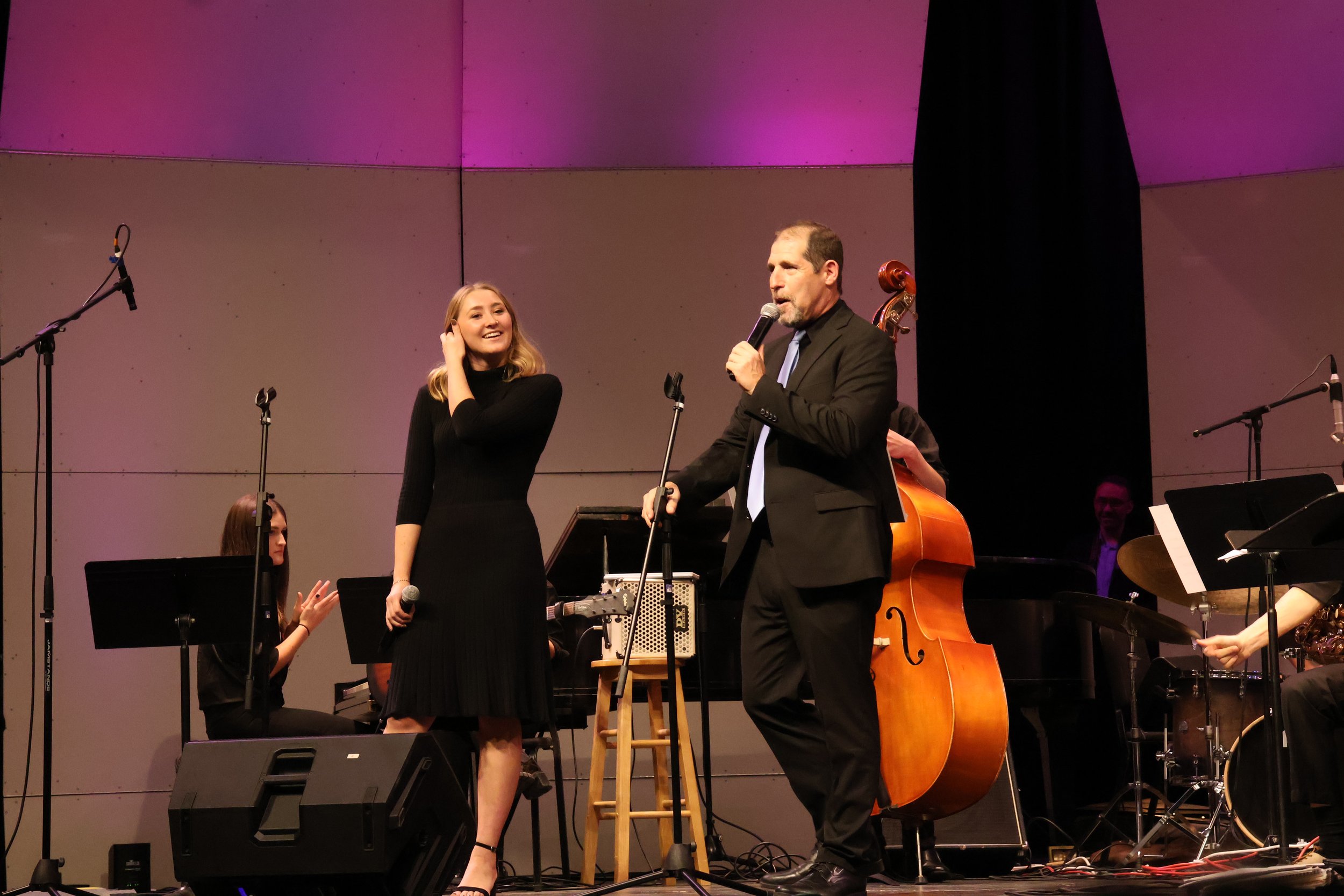By Maya Johnson
By the time legendary jazz pianist Duke Ellington's Black, Brown and Beige premiered at Carnegie Hall in 1943, jazz had been demeaned as “Black music” and was not taken seriously by white America as a musical artform, says UC Santa Barbara Jazz Ensemble director Jon Nathan.
UCSB Jazz Ensemble director Jon Nathan introduces the group’s Fall 2023 concert devoted to pianist and composer Duke Ellington.
In performing a musical tradition that voiced Black struggle and liberation during the Jazz Age, a predominantly white jazz band at a predominantly white university must reckon with the inequities that birthed the jazz movement in order advance the artform’s legacy.
As a part of the UCSB Music Department's Fall Concert Series, Nathan’s jazz ensemble performed a tribute titled The Identity of Ellington. Capping a series of performances centered on identity, Nathan and the ensemble explored what it meant for Ellington—and for themselves—to push against the limits of the category “jazz musician.”
The concert at Lotte Lehmann Concert Hall was designed to highlight the three progressive movements of Ellington's extended work Black, Brown, and Beige. It featured two big band jazz orchestras and a number of soloists playing piano, trumpet, guitar, saxophone, clarinet, and violin, with several vocal accompaniments.
Black, Brown, and Beige, A Duke Ellington tone composition meant to parallel to the American Black experience by the mid 20th century.
“I’m always very sensitive to how the efforts I make are being perceived, especially by the population that it’s representing,” Nathan said, acknowledging he was leading a primarily non-Black band performing Ellington's work.
He said Ellington composed Black, Brown, and Beige to be representative of an African American experience. “It was an attempt to be taken seriously as a jazz composer,” Nathan said.
The rhapsody, when it debuted to mixed-race audience of prominent leaders and artists, sought to “parallel the history of the American Negro,” according to Ellington. The three movements draw from African as well as American musical tradition to track the African American people through enslavement, war, and life. By blending pure jazz and pure classical standards, Ellington set out to define himself as a composer beyond jazz.
Nathan said the themes have proved applicable and relevant over time. “I don't want to partake in tokenism, but I do think it's important to bring a spotlight onto these issues,” he said.
UCSB Jazz Ensemble director Jon Nathan introduces Vocal Jazz Competition winner Atalia Zahrndt for her performance of Imagine My Frustration, at “The Identity of Ellington” concert.
For Nathan, the Ellington concert was part of important efforts by jazz musicians to understand the history of the genre, as it continues evolve and expand — including giving credit to artists and innovators who were underpaid, discriminated against, and sidelined as jazz culture developed.
In addition to the main symphonic event, the Fall concert was able to showcase more voices than they ever have before. Winners of UCSB’s first annual Vocal Jazz Competition Atalia Zahrndt and Irene Chaey wowed the audience with accompaniments of Ellington's Imagine My Frustration and Sophisticated Lady. Continuing to explore the themes of identity through jazz, Nathan plans to focus on vocalists in the ensemble’s next concert series.
“Instrumentalists are always trying to play like vocalists and play things that people will sing,” he said. “There are actually more singers now than there have ever been. I want to show music that was inspired by the voice.”
Click here to view the entire UCSB Jazz Ensemble concert in honor of jazz pianist and composer Duke Ellington.
Maya Johnson is a fourth-year Writing and Literature studies major at UC Santa Barbara. She is a Web and Social media intern with the Division of Humanities and Fine Arts.




